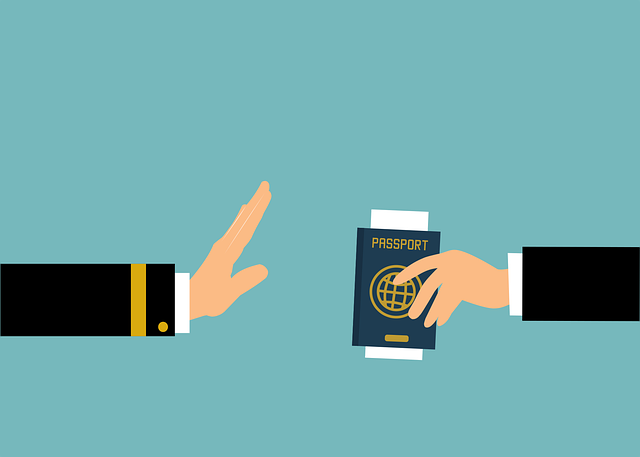What Happens If Your Visa Application Is Rejected?

Receiving a visa rejection can be frustrating and stressful, especially if you were counting on traveling, working, or studying in another country. However, a visa rejection is not the end of the road. Understanding why your application was denied and knowing your options can help you address the issue and potentially reapply successfully. Below is a detailed guide on what happens after a visa rejection and what steps you can take.
1. Reasons for Visa Rejection
Before exploring your options, it’s important to understand why visa applications are typically rejected. Common reasons include:
- Incomplete Documentation : Missing or incorrect paperwork, such as bank statements, proof of accommodation, or travel insurance.
- Insufficient Financial Proof : Failing to demonstrate that you have enough funds to support yourself during your stay.
- Ineligibility : Not meeting the specific requirements of the visa category (e.g., work experience, qualifications, or language proficiency).
- Immigration Concerns : The authorities may suspect you intend to overstay your visa or violate its terms.
- Criminal Record : A history of criminal activity or security concerns.
- Previous Visa Violations : Overstaying a previous visa or violating immigration rules.
- Failure to Attend an Interview : Missing a required visa interview or providing unsatisfactory answers during the interview.
- Quota Limits : Some visas have annual caps, and applications may be rejected if the quota is full.
2. Notification of Rejection
When your visa application is rejected, you will typically receive an official notification from the embassy or consulate. This letter will include:
- The reason(s) for the rejection.
- Reference to the specific immigration law or regulation that led to the denial.
- Information about your right to appeal or reapply (if applicable).
It’s crucial to carefully review this letter, as it provides valuable insights into why your application was denied and what steps you can take next.
3. Can You Appeal the Decision?
In many cases, you have the right to appeal a visa rejection. However, the process and timeline vary depending on the country and type of visa. Here’s what you need to know:
a. Check the Appeal Process
- Review the rejection letter to determine if you’re eligible to appeal.
- Appeals are typically handled by an independent tribunal or administrative body, not the embassy or consulate.
b. Gather Additional Evidence
- If the rejection was due to insufficient documentation or misunderstandings, gather additional evidence to support your case.
- For example, provide updated financial statements, clarification letters, or new supporting documents.
c. Submit the Appeal Within the Deadline
- Most countries impose strict deadlines for filing appeals (e.g., 28 days or 30 days from the rejection date).
- Missing the deadline could forfeit your right to appeal.
d. Hire Legal Assistance
- Consider consulting an immigration lawyer or specialist to help prepare your appeal. They can ensure your submission is strong and compliant with legal requirements.
4. Reapplying for the Visa
If appealing isn’t an option or doesn’t succeed, you may be able to reapply for the same visa. However, there are important considerations:
a. Address the Reason for Rejection
- Before reapplying, ensure you’ve resolved the issues that led to the rejection.
- For example:
- If your financial proof was insufficient, save more money and provide updated bank statements.
- If your documentation was incomplete, double-check all requirements and submit everything correctly.
b. Wait for the Required Cooling-Off Period
- Some countries require applicants to wait a certain period before reapplying after a rejection (e.g., 6 months or 1 year).
- Attempting to reapply too soon could result in another rejection.
c. Choose a Different Visa Category
- If your circumstances have changed or you qualify for a different visa type, consider applying under a new category.
- For example, switch from a tourist visa to a student visa if you’ve been accepted into a university.
d. Be Honest About Previous Rejections
- When reapplying, you’ll likely be asked if you’ve had a visa application rejected before. Always answer truthfully, as lying could lead to further complications or bans.
5. Consequences of a Visa Rejection
While a single rejection usually doesn’t have long-term consequences, repeated rejections or violations of immigration rules can lead to serious penalties:
- Visa Ban : Some countries impose temporary or permanent bans on applicants who repeatedly fail to meet visa requirements.
- Negative Impact on Future Applications : A rejection may be recorded in immigration databases, potentially affecting future visa or residency applications.
- Financial Loss : You may lose the visa application fee, which is typically non-refundable.
6. Preventing Future Rejections
To minimize the risk of rejection when reapplying or applying for a different visa, follow these tips:
- Read Requirements Carefully : Ensure you understand all eligibility criteria and document requirements.
- Double-Check Your Application : Review every section of your application for accuracy and completeness.
- Seek Professional Help : Consult an immigration lawyer or visa consultant to ensure your application is strong.
- Prepare for Interviews : Practice answering potential questions confidently and honestly.
- Maintain Clean Immigration Records : Avoid overstaying visas or violating immigration laws in any country.
7. Emotional and Practical Support
Dealing with a visa rejection can be emotionally challenging. Here’s how to cope and move forward:
- Stay Positive : Remember that many people face rejections and go on to succeed after addressing the issues.
- Learn from the Experience : Use the feedback from the rejection letter to improve your next application.
- Seek Support : Talk to friends, family, or online communities who have gone through similar experiences.
8. Example Scenario: Rejection Due to Insufficient Funds
Imagine your visa application was rejected because the embassy determined you didn’t have enough money to cover your expenses. Here’s how you might address the issue:
- Save additional funds and provide updated bank statements showing a higher balance.
- Include a sponsorship letter from a family member or employer guaranteeing financial support.
- Reapply once you’ve strengthened your financial proof.



